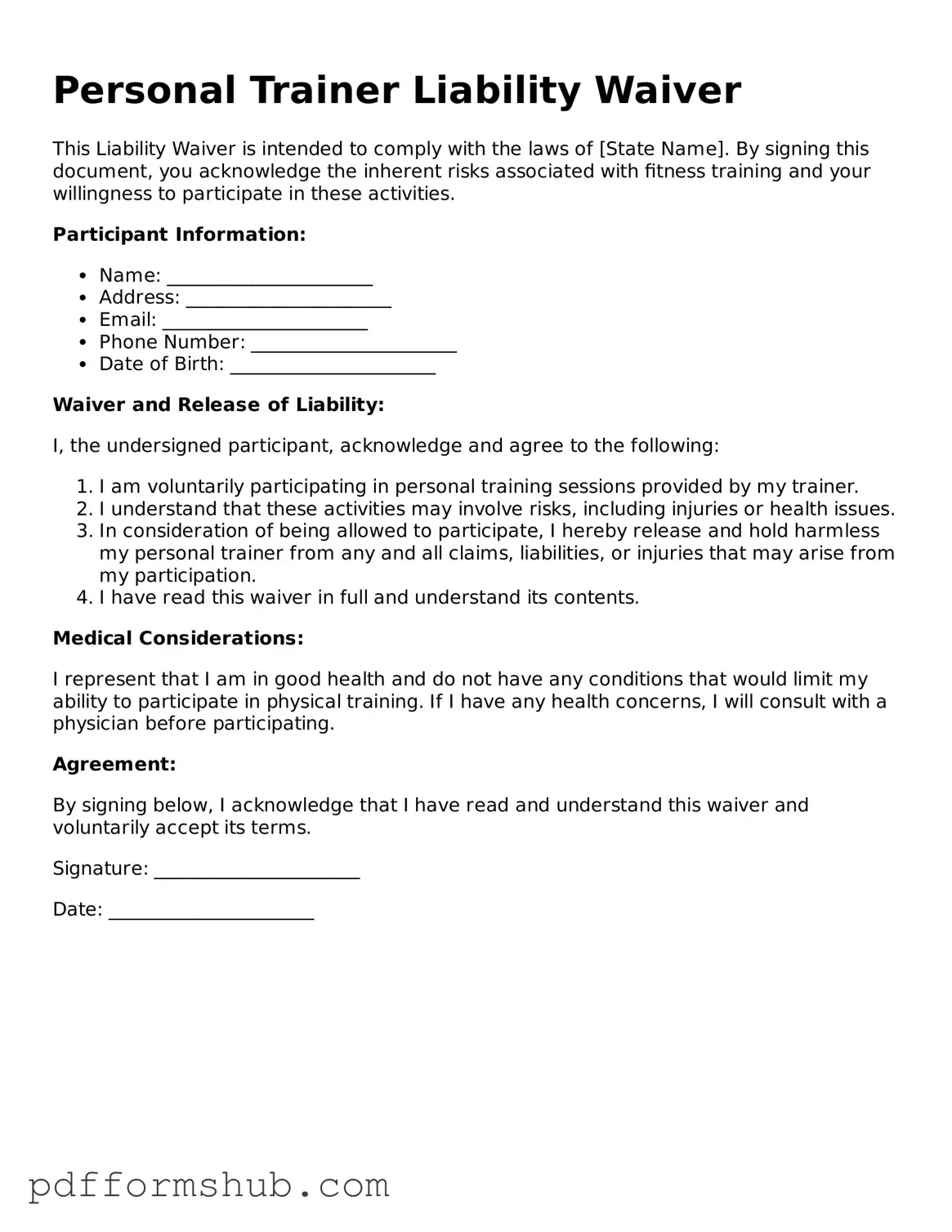Valid Personal Trainer Liability Waiver Form
A Personal Trainer Liability Waiver form is a legal document designed to protect fitness professionals from claims of negligence or injury that may occur during training sessions. By signing this waiver, clients acknowledge the inherent risks associated with physical activities and agree to release the trainer from liability. Understanding this form is crucial for both trainers and clients to ensure a safe and informed fitness experience.
To safeguard your interests, consider filling out the Personal Trainer Liability Waiver form by clicking the button below.
Customize Form
